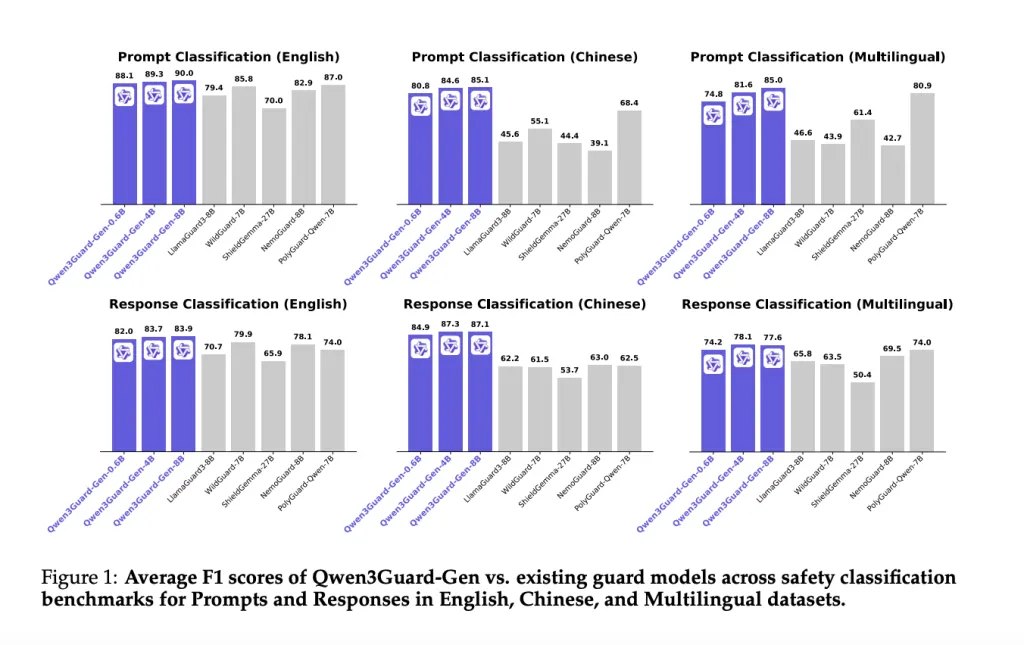In this tutorial, we walk through an advanced end-to-end data science workflow where we combine traditional machine learning with the power of Gemini. We begin by preparing and modeling the diabetes dataset, then we dive into evaluation, feature importance, and partial dependence. Along the way, we bring in Gemini as our AI data scientist to explain results, answer exploratory questions, and highlight risks. By doing this, we build a predictive model while also enhancing our insights and decision-making through natural language interaction. Check out the FULL CODES here. Copy CodeCopiedUse a different Browser !pip -qU google-generativeai scikit-learn matplotlib pandas numpy from getpass import getpass import os, json, numpy as np, pandas as pd, matplotlib.pyplot as plt if not os.environ.get(“GOOGLE_API_KEY”): os.environ[“GOOGLE_API_KEY”] = getpass(” Enter your Gemini API key (hidden): “) import google.generativeai as genai genai.configure(api_key=os.environ[“GOOGLE_API_KEY”]) LLM = genai.GenerativeModel(“gemini-1.5-flash”) def ask_llm(prompt, sys=None): p = prompt if sys is None else f”System:n{sys}nnUser:n{prompt}” r = LLM.generate_content(p) return (getattr(r, “text”, “”) or “”).strip() from sklearn.datasets import load_diabetes raw = load_diabetes(as_frame=True) df = raw.frame.rename(columns={“target”:”disease_progression”}) print(“Shape:”, df.shape); display(df.head()) from sklearn.model_selection import train_test_split, KFold, cross_val_score from sklearn.compose import ColumnTransformer from sklearn.preprocessing import StandardScaler, QuantileTransformer from sklearn.ensemble import HistGradientBoostingRegressor from sklearn.pipeline import Pipeline X = df.drop(columns=[“disease_progression”]); y = df[“disease_progression”] num_cols = X.columns.tolist() pre = ColumnTransformer( [(“scale”, StandardScaler(), num_cols), (“rank”, QuantileTransformer(n_quantiles=min(200, len(X)), output_distribution=”normal”), num_cols)], remainder=”drop”, verbose_feature_names_out=False) model = HistGradientBoostingRegressor(max_depth=3, learning_rate=0.07, l2_regularization=0.0, max_iter=500, early_stopping=True, validation_fraction=0.15) pipe = Pipeline([(“prep”, pre), (“hgbt”, model)]) Xtr, Xte, ytr, yte = train_test_split(X, y, test_size=0.20, random_state=42) cv = KFold(n_splits=5, shuffle=True, random_state=42) cv_mse = -cross_val_score(pipe, Xtr, ytr, scoring=”neg_mean_squared_error”, cv=cv).mean() cv_rmse = float(cv_mse ** 0.5) pipe.fit(Xtr, ytr) We load the diabetes dataset, preprocess the features, and build a robust pipeline using scaling, quantile transformation, and gradient boosting. We split the data, perform cross-validation to estimate RMSE, and then fit the final model to see how well it generalizes. Check out the FULL CODES here. Copy CodeCopiedUse a different Browser pred_tr = pipe.predict(Xtr); pred_te = pipe.predict(Xte) rmse_tr = mean_squared_error(ytr, pred_tr) ** 0.5 rmse_te = mean_squared_error(yte, pred_te) ** 0.5 mae_te = mean_absolute_error(yte, pred_te) r2_te = r2_score(yte, pred_te) print(f”CV RMSE={cv_rmse:.2f} | Train RMSE={rmse_tr:.2f} | Test RMSE={rmse_te:.2f} | Test MAE={mae_te:.2f} | R²={r2_te:.3f}”) plt.figure(figsize=(5,4)) plt.scatter(pred_te, yte – pred_te, s=12) plt.axhline(0, lw=1); plt.xlabel(“Predicted”); plt.ylabel(“Residual”); plt.title(“Residuals (Test)”) plt.show() from sklearn.inspection import permutation_importance imp = permutation_importance(pipe, Xte, yte, scoring=”neg_mean_squared_error”, n_repeats=10, random_state=0) imp_df = pd.DataFrame({“feature”: X.columns, “importance”: imp.importances_mean}).sort_values(“importance”, ascending=False) display(imp_df.head(10)) plt.figure(figsize=(6,4)) top10 = imp_df.head(10).iloc[::-1] plt.barh(top10[“feature”], top10[“importance”]) plt.title(“Permutation Importance (Top 10)”); plt.xlabel(“Δ(MSE)”); plt.tight_layout(); plt.show() We evaluate our model by computing train, test, and cross-validation metrics, and visualize residuals to check prediction errors. We then calculate permutation importance to identify which features drive the model most, and display the top contributors using a clear bar plot. Check out the FULL CODES here. Copy CodeCopiedUse a different Browser def compute_pdp(pipe, Xref: pd.DataFrame, feat: str, grid=40): xs = np.linspace(np.percentile(Xref[feat], 5), np.percentile(Xref[feat], 95), grid) Xtmp = Xref.copy() ys = [] for v in xs: Xtmp[feat] = v ys.append(pipe.predict(Xtmp).mean()) return xs, np.array(ys) top_feats = imp_df[“feature”].head(3).tolist() plt.figure(figsize=(6,4)) for f in top_feats: xs, ys = compute_pdp(pipe, Xte.copy(), f, grid=40) plt.plot(xs, ys, label=f) plt.legend(); plt.xlabel(“Feature value”); plt.ylabel(“Predicted target”); plt.title(“Manual PDP (Top 3)”) plt.tight_layout(); plt.show() report_obj = { “dataset”: {“rows”: int(df.shape[0]), “cols”: int(df.shape[1]-1), “target”: “disease_progression”}, “metrics”: {“cv_rmse”: float(cv_rmse), “train_rmse”: float(rmse_tr), “test_rmse”: float(rmse_te), “test_mae”: float(mae_te), “r2”: float(r2_te)}, “top_importances”: imp_df.head(10).to_dict(orient=”records”) } print(json.dumps(report_obj, indent=2)) sys_msg = (“You are a senior data scientist. Return: (1) ≤120-word executive summary, ” “(2) key risks/assumptions bullets, (3) 5 prioritized next experiments w/ rationale, ” “(4) quick-win feature engineering ideas as Python pseudocode.”) summary = ask_llm(f”Dataset + metrics + importances:n{json.dumps(report_obj)}”, sys=sys_msg) print(“n Gemini Executive Briefn” + “-“*80 + f”n{summary}n”) We compute the manual partial dependence for the top three features and visualize how changing each one affects the predictions. We then assemble a compact JSON report of dataset statistics, metrics, and importances, and ask Gemini to generate an executive brief that includes risks, next experiments, and quick-win feature engineering ideas. Check out the FULL CODES here. Copy CodeCopiedUse a different Browser SAFE_GLOBALS = {“pd”: pd, “np”: np} def run_generated_pandas(code: str, df_local: pd.DataFrame): banned = [“__”, “import”, “open(“, “exec(“, “eval(“, “os.”, “sys.”, “pd.read”, “to_csv”, “to_pickle”, “to_sql”] if any(b in code for b in banned): raise ValueError(“Unsafe code rejected.”) loc = {“df”: df_local.copy()} exec(code, SAFE_GLOBALS, loc) return {k:v for k,v in loc.items() if k not in (“df”,)} def eda_qa(question: str): prompt = f”””You are a Python+Pandas analyst. DataFrame `df` columns: {list(df.columns)}. Write a SHORT pandas snippet (no comments/prints) that computes the answer to: “{question}”. Use only pd/np/df; assign the final result to a variable named `answer`.””” code = ask_llm(prompt, sys=”Return only code. No prose.”) try: out = run_generated_pandas(code, df) return code, out.get(“answer”, None) except Exception as e: return code, f”[Execution error: {e}]” questions = [ “What is the Pearson correlation between BMI and disease_progression?”, “Show mean target by tertiles of BMI (low/med/high).”, “Which single feature correlates most with the target (absolute value)?” ] for q in questions: code, ans = eda_qa(q) print(“nQ:”, q, “nCode:n”, code, “nAnswer:n”, ans) We build a safe sandbox to execute pandas code that Gemini generates for exploratory data analysis. We then ask natural language questions about correlations and feature relationships, let Gemini write the pandas snippets, and automatically run them to get direct answers from the dataset. Check out the FULL CODES here. Copy CodeCopiedUse a different Browser crossitique = ask_llm( f”””Metrics: {report_obj[‘metrics’]} Top importances: {report_obj[‘top_importances’]} Identify risks around leakage, overfitting, calibration, OOD robustness, and fairness (even proxy-only). Propose quick checks (concise Python sketches).””” ) print(“n Gemini Risk & Robustness Reviewn” + “-“*80 + f”n{critique}n”) def what_if(pipe, Xref: pd.DataFrame, feat: str, delta: float = 0.05): x0 = Xref.median(numeric_only=True).to_dict() x1, x2 = x0.copy(), x0.copy() if feat not in x1: return np.nan x2[feat] = x1[feat] + delta X1 = pd.DataFrame([x1], columns=X.columns) X2 = pd.DataFrame([x2], columns=X.columns) return float(pipe.predict(X2)[0] – pipe.predict(X1)[0]) for f in top_feats: print(f”Estimated Δtarget if {f} increases by +0.05 ≈ {what_if(pipe, Xte, f, 0.05):.2f}”) print(“n Done: Train → Explain → Query with Gemini → Review risks → What-if analysis. ” “Swap the dataset or tweak model params to extend this notebook.”) We ask Gemini to review our model for risks like leakage, overfitting, and fairness, and get quick Python checks as suggestions. We then



